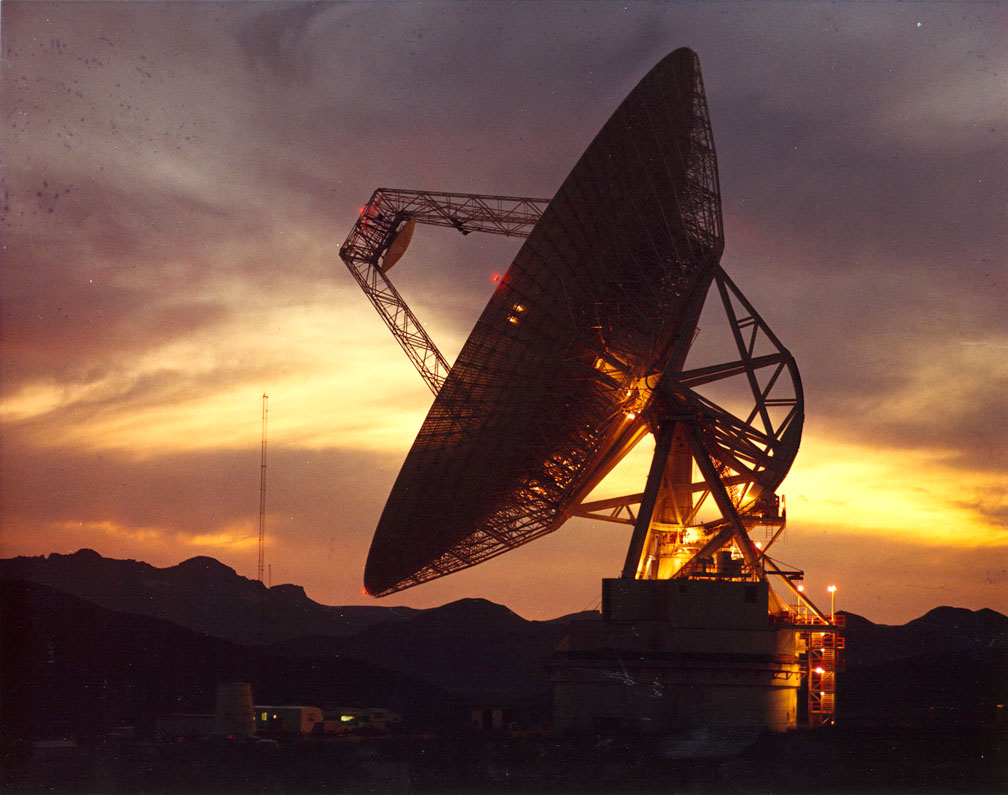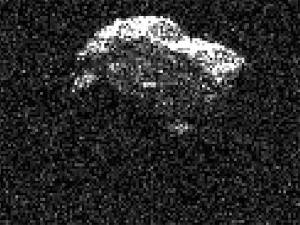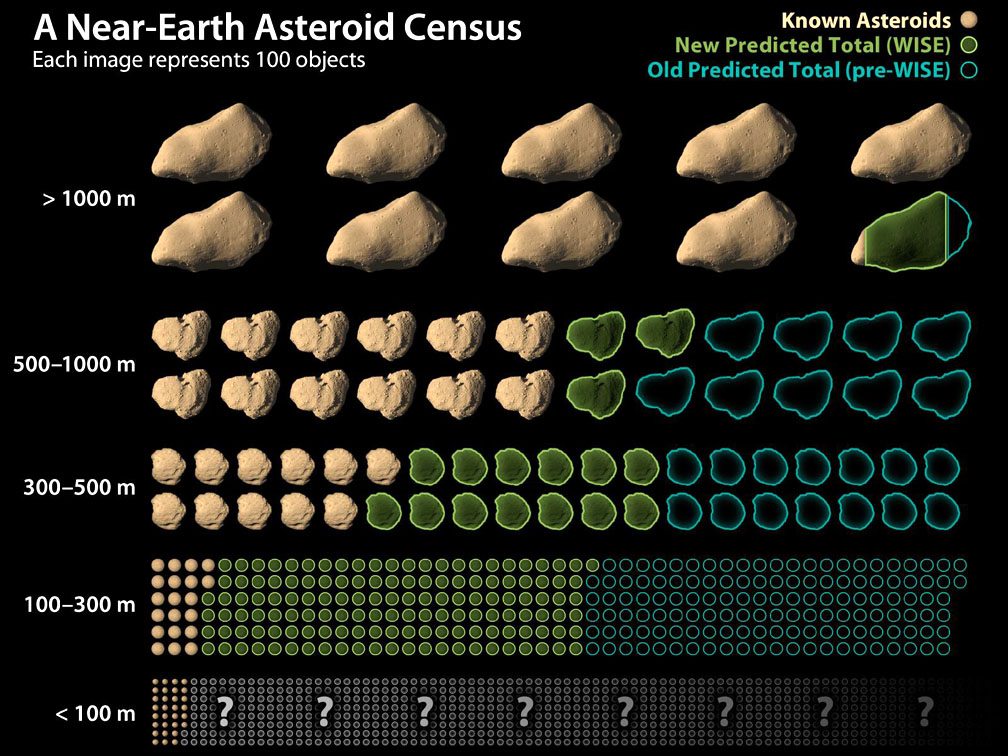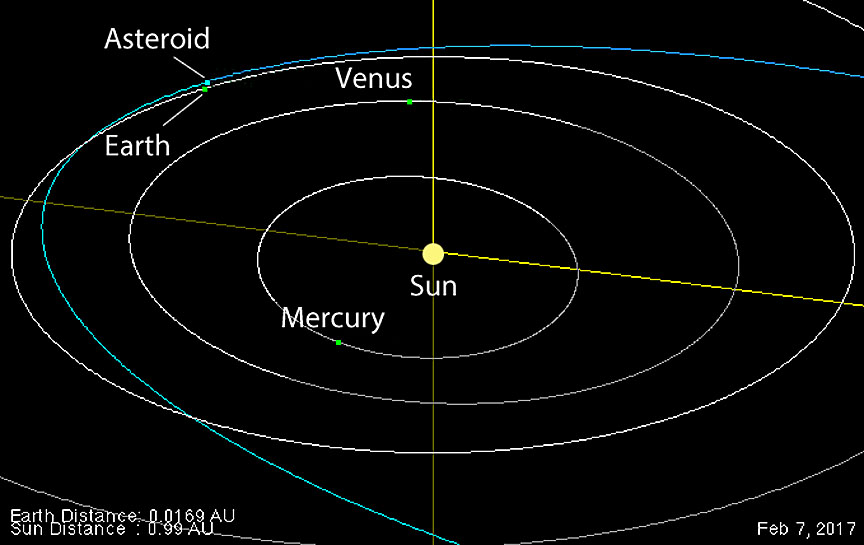
To radar imager Lance Benner at JPL in Pasadena, asteroid 2017 BQ6 resembles the polygonal dice used in Dungeons and Dragons. But my eyes see something closer to a stepping stone or paver you’d use to build a walkway. However you picture it, this asteroid is more angular than most imaged by radar.
It flew harmlessly by Earth on Feb. 7 at 1:36 a.m. EST (6:36 UT) at about 6.6 times the distance between Earth and the moon or some about 1.6 million miles. Based on 2017 BQ6’s brightness, astronomers estimate the hurtling boulder about 660 feet (200 meters) across. The recent flyby made for a perfect opportunity to bounce radio waves off the object, harvest their echoes and build an image of giant space boulder no one had ever seen close up before.

The images of the asteroid were obtained on Feb. 6 and 7 with NASA’s 230-foot (70-meter) antenna at the Goldstone Deep Space Communications Complex in California and reveal an irregular, angular-appearing asteroid:

“The radar images show relatively sharp corners, flat regions, concavities, and small bright spots that may be boulders,” said Lance Benner of NASA’s Jet Propulsion Laboratory in Pasadena, California, who leads the agency’s asteroid radar research program. “Asteroid 2017 BQ6 reminds me of the dice used when playing Dungeons and Dragons.”
2017 BQ6 was discovered on Jan. 26 by the NASA-funded Lincoln Near Earth Asteroid Research (LINEAR) Project, operated by MIT Lincoln Laboratory on the Air Force Space Command’s Space Surveillance Telescope at White Sands Missile Range, New Mexico.
Radar has been used to observe hundreds of asteroids. Even through very large telescopes, 2017 BQ6 would have appeared exactly like a star, but the radar technique reveals shape, size, rotation, roughness and even surface features.

To create the images, Benner conducted a controlled experiment on the asteroid, transmitting a signal with well-known characteristics to the object and then, by comparing the echo to the transmission, deduced its properties. According to NASA’s Asteroid Radar Research site, measuring how the echo power spreads out over time along with changes in its frequency caused by the Doppler Effect (object approaching or receding from Earth), provide the data to construct two-dimensional images with resolutions finer than 33 feet (10 meters) if the echoes are strong enough.

In late October 2016, the number of known near-Earth asteroids topped 15,000 with new discoveries averaging about 30 a week. A near-Earth asteroid is defined as a rocky body that approaches within approximately 1.3 times Earth’s average distance to the Sun. This distance then brings the asteroid within roughly 30 million miles (50 million km) of Earth’s orbit. To date, astronomers have already discovered more than 90% of the estimated number of the large near-Earth objects or those larger than 0.6 miles (1 km). It’s estimated that more than a million NEAs smaller than 330 feet (100 meters) lurk in the void. Time to get crackin’.


How that was formed has got to be interesting
What an interesting rock! It says to my amateur eyes that the asteroid’s blocky shape may come from a ‘recent’ collision event? (Geologic time recent)